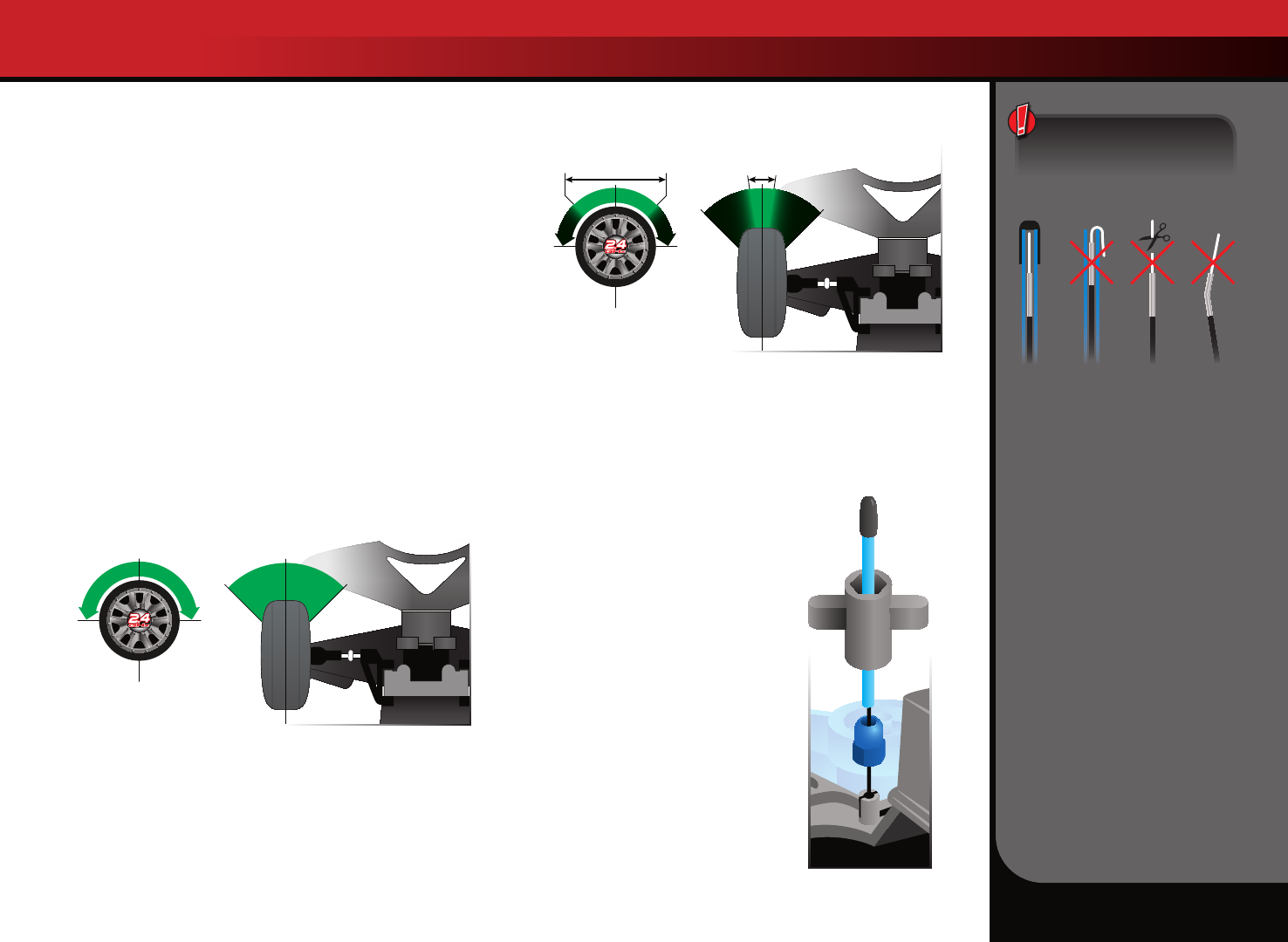
NITRO 4-TEC 3.3
•
13
Steering Sensitivity (Exponential)
The Multi-Function knob on the TQ2.4GHz transmitter has
been programmed to control Steering Sensitivity (also known
as exponential). The standard setting for Steering Sensitivity is
“normal (zero exponential),” with the dial full left in its range of
travel. This setting provides linear servo response: the steering
servo’s movement will correspond exactly with the input from
the transmitter’s steering wheel. Turning the knob clockwise from
center will result in “negative exponential” and decrease steering
sensitivity by making the servo less responsive near neutral, with
increasing sensitivity as the servo nears the limits of its travel range.
The farther you turn the knob, the more pronounced the change
in steering servo movement will be. The term “exponential” comes
from this effect; the servo’s travel changes exponentially relative
to the input from the steering wheel. The exponential effect is
indicated as a percentage—the greater the percentage, the greater
the effect. The illustrations below show how this works.
Normal Steering Sensitivity (0% exponential)
In this illustration, the steering servo’s travel (and with it,
the steering motion of the model’s front wheels) corresponds
precisely with the steering wheel. The ranges are exaggerated for
illustrative purposes.
Decreased Steering Sensitivity (Negative Exponential)
By turning the Multi-Function knob clockwise, the steering
sensitivity of the model will be decreased. Note that a relatively
large amount of steering wheel travel results in a smaller amount of
servo travel. The farther you turn the knob, the more pronounced
the effect becomes. Decreased steering sensitivity may be helpful
when driving on low-traction surfaces, when driving at high speed,
or on tracks that favor sweeping turns where gentle steering inputs
are required. The ranges are exaggerated for illustrative purposes.
Experiment! Try varying degrees of exponential. It’s easy to go
back to “zero” if you don’t like the effect. There’s no wrong way to
adjust exponential. Any setting that makes you more comfortable with
your car’s handling is the “right setting.”
SETTING UP THE ANTENNA
The receiver antenna has been set up
and installed from the factory.
When reinstalling the antenna, rst
slide the antenna wire into bottom of
antenna tube until white tip of antenna
is at top of tube under the black cap.
Insert the base of the tube into the
antenna post. Take care not to crimp
the antenna wire. Slide the crimp nut
over the antenna tube and screw it onto
the antenna post. Use the supplied tool
to tighten the crimp nut on the post
just until the antenna tube is securely
in place. Do not over tighten or crush
the antenna wire against the chassis.
Do
not bend or kink the antenna wire! See
the side bar for more information. Do not
shorten the antenna tube.
Turning Range
at Transmitter
Effective Turning
Range on Model
To prevent loss of radio range
do not kink or cut the black wire,
do not bend or cut the metal tip,
and do not bend or cut the white
wire at the end of the metal tip.
Correct
NoNo No
TRAXXAS TQ 2.4GHZ RADIO SYSTEM
Antenna
Tip
Antenna
Tube
Antenna
Mount
Antenna
Nut
Antenna
Nut Wrench
